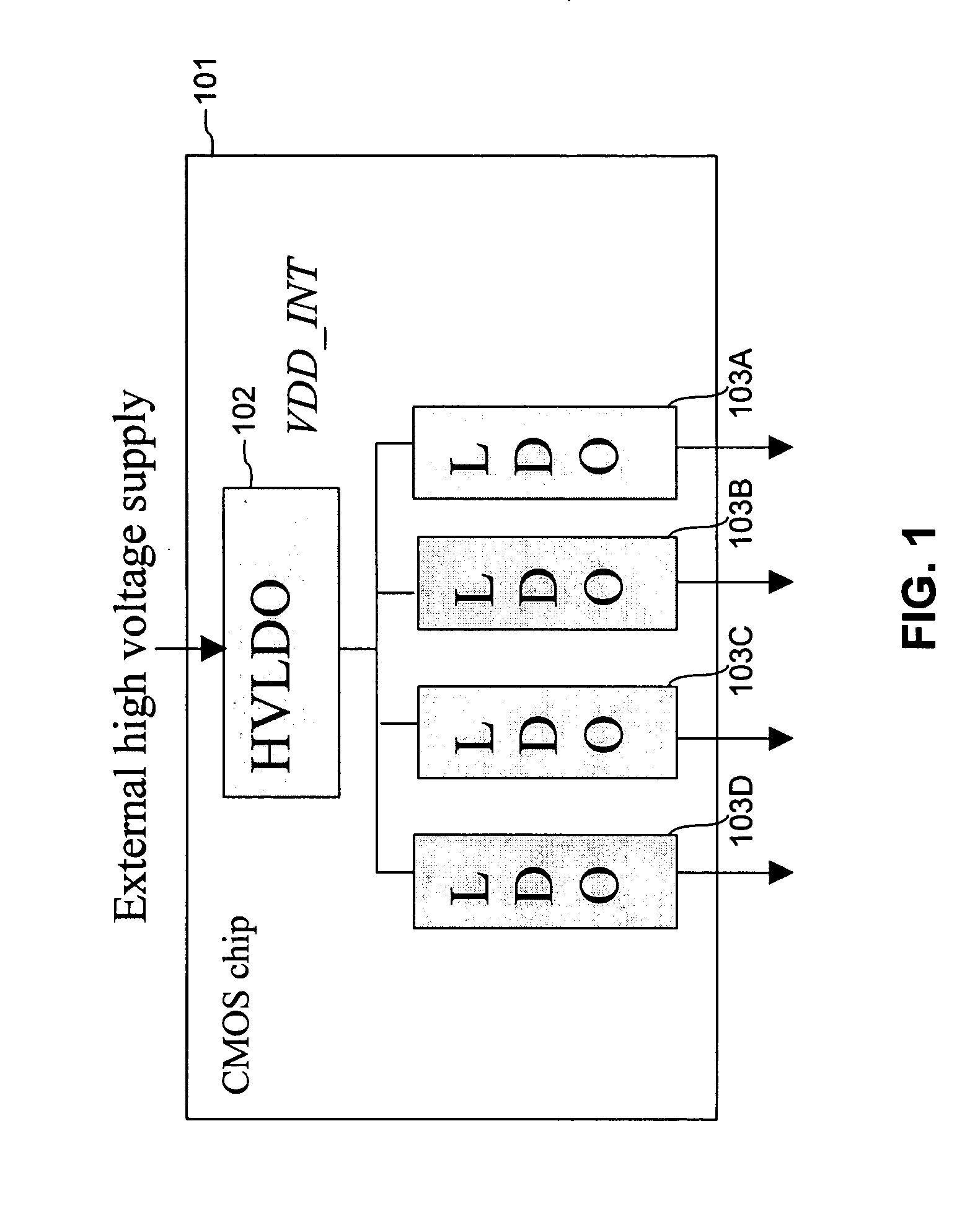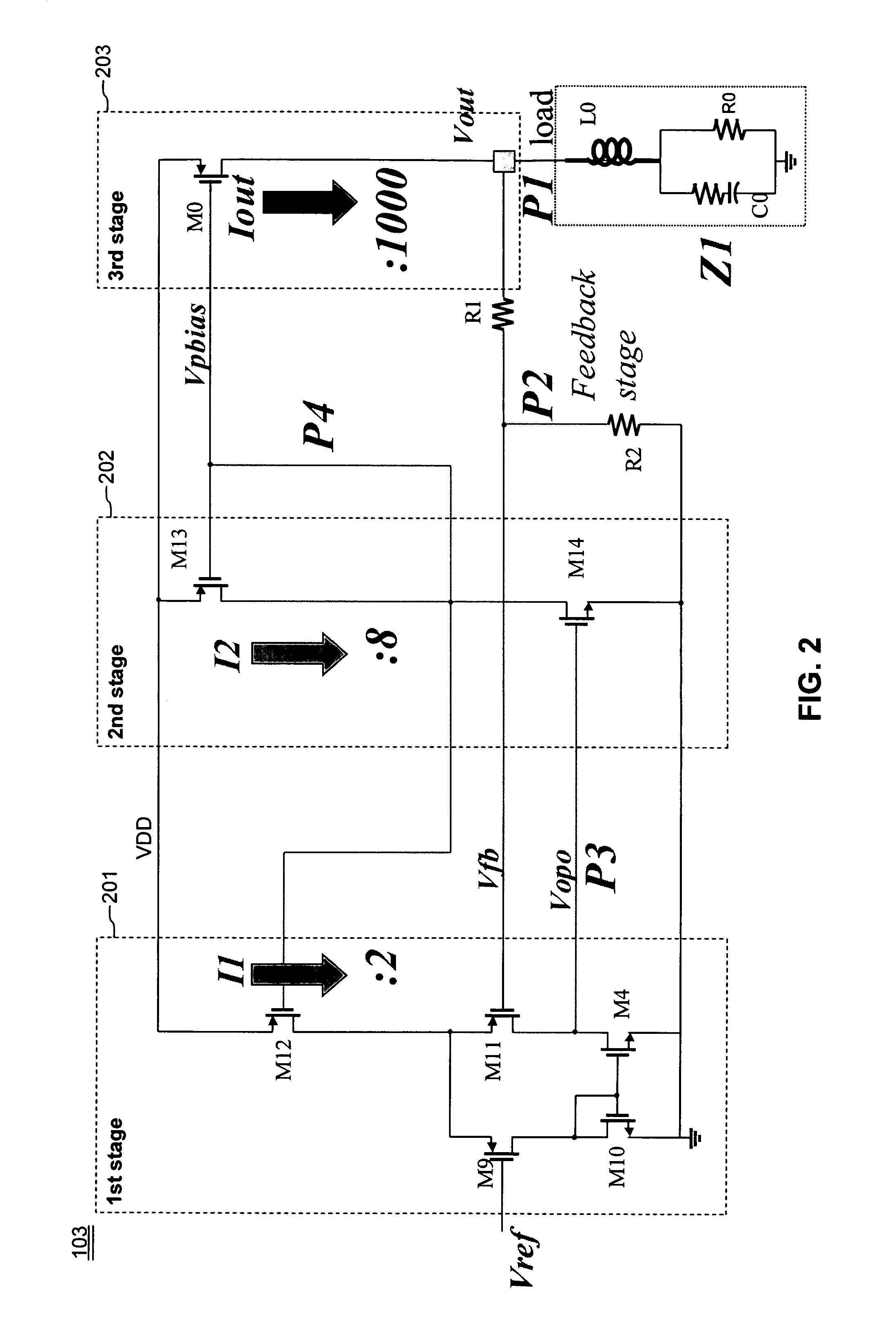Power management unit for use in portable applications
a power management unit and portable technology, applied in the direction of electric variable regulation, process and machine control, instruments, etc., can solve the problems of significant difficulty in integrating bipolar elements with other cmos circuit elements, and increase in power dissipation
- Summary
- Abstract
- Description
- Claims
- Application Information
AI Technical Summary
Benefits of technology
Problems solved by technology
Method used
Image
Examples
Embodiment Construction
Reference will now be made in detail to the embodiments of the present invention, examples of which are illustrated in the accompanying drawings.
FIG. 1 illustrates a voltage regulator arrangement of the present invention. As shown in FIG. 1, a CMOS voltage regulator chip 101 has an external high voltage supply as an input. The external high voltage supply may be a main battery, typically with a maximum output voltage of about 3.3-4.6 volts, or a line charger input (5-20V). The output voltage range of 3.3-4.6 volts is typical for lithium ion type batteries. The regulator chip 101 includes one high voltage low dropout (HVLDO) regulator 102 (hereafter, sometimes referred to as “high voltage regulator”), outputting a voltage VDD13 INT, which is at or below the breakdown voltage of the downstream CMOS devices.
In series with the high voltage low dropout regulator 102 are a plurality of low voltage low dropout regulators (LVLDO's) 103A-103D (hereafter, sometimes referred to as “low vol...
PUM
 Login to View More
Login to View More Abstract
Description
Claims
Application Information
 Login to View More
Login to View More - R&D
- Intellectual Property
- Life Sciences
- Materials
- Tech Scout
- Unparalleled Data Quality
- Higher Quality Content
- 60% Fewer Hallucinations
Browse by: Latest US Patents, China's latest patents, Technical Efficacy Thesaurus, Application Domain, Technology Topic, Popular Technical Reports.
© 2025 PatSnap. All rights reserved.Legal|Privacy policy|Modern Slavery Act Transparency Statement|Sitemap|About US| Contact US: help@patsnap.com



